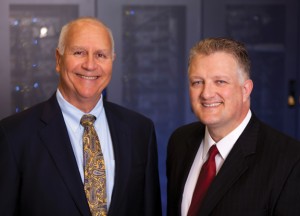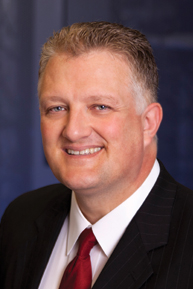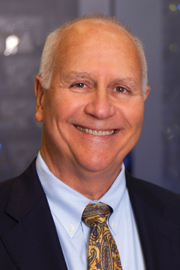 By Kensie Hamilton
By Kensie Hamilton
When people think of West Virginia, the high technology industry and the advances in research and development may not be the first things that come to mind. It is the impact these industries are having on our state, though, that are propelling West Virginia into the next generation and a global market.
West Virginia is blessed to have not one but two technology parks—the West Virginia High Technology Consortium Foundation (WVHTCF) and the West Virginia Regional Technology Park (WVRTP)—and both are making great strides to better not only our state but the world.
For this issue of West Virginia Executive, we sat down with James Estep, the president and CEO of the WVHTCF, and J. Phillip Halstead, Ph.D., the executive director and CEO of the WVRTP. Estep walked us through the development and strategic planning that has taken place over the last 12 years to help make the I-79 Technology Park one of the best in the nation. Halstead showed us how he has made great strides in growing Charleston’s new technology park since taking over a little more than a year ago. These two men have used their respective tech parks to show what can be accomplished when the public and private sectors work together.
 James Estep
James Estep
President and CEO, West Virginia High Technology Consortium Foundation
WVE: When did the I-79 Technology Park open and what was the main drive or purpose for its opening?
JE: The I-79 Technology Park was first conceptualized in mid-2001 after an extensive strategic planning process. These efforts concluded that a well-planned and manageable infrastructure development effort was critical to building a technology-based economy in North Central West Virginia. Focusing these development efforts in a specific location such as a technology park provided the best framework for achieving this objective. The West Virginia High Technology Consortium Foundation began both master planning and property acquisition over the next few years, ultimately resulting in the tech park we have today.
The tech park is critical to the successful diversification of the existing regional economy with a technology sector because it demonstrates quality and capability through the existing infrastructure and facilities, as well as capacity and scalability through the 400+ acres and the master plan. Phase I of the four phases is nearly complete, and it provides definitive proof that even the most advanced technology programs can be supported at world-class levels.
WVE: When did you become president and how would you describe the state of the tech park then as compared to now?
JE: I became the president and CEO of the West Virginia High Technology Consortium Foundation in 2000. At that time, the organization only owned approximately 26 acres that served as the location of their headquarters, the Alan B. Mollohan Innovation Center. The innovation center provided office space to various technology companies and housed the organization’s small business incubator.
WVE: What has been the most interesting achievement you have seen since you took over as president?
JE: Recruitment of the National Oceanic and Atmospheric Administration (NOAA) to the park in 2010 marked a critical milestone for the tech park. It was very important because it brought with it significant infrastructure upgrades and international notoriety. As of the end of 2012, NOAA will have spent more than $50 million in establishing an incredibly advanced telecommunications and electrical infrastructure at the I-79 Technology Park. While the infrastructure was put in place to support NOAA-specific programs, it has the added benefit of creating this capability for the entire 400-acre park.
The NOAA programs include a supercomputing center and one of the most advanced satellite ground stations in the world. The supercomputing center, called the Environmental Security Computing Center (ESCC), was designed and built to support multiple supercomputers. This infrastructure also happens to make the I-79 Technology Park one of the most attractive locations for data centers in the world. The satellite programs, namely the Geostationary Operational Environmental Satellite-R Series program, also known as GOES-R, and the Joint Polar Satellite System are two of the world’s most important satellite efforts for providing timely and accurate climate and weather data to North America. Again, the infrastructure was designed and built to support multiple ground station efforts, making the park an ideal location for several potential future satellite programs.
WVE: Describe for us the economic impact the tech park has on both the region and the state.
JE: A few years ago, the Anderson Economic Group conducted a study of the impact of North Central West Virginia’s technology sector. The study noted that in the I-79 Technology Corridor approximately 11 percent of all employees work in what can be described as the technology industry. The report noted that these employees accounted for 19 percent of the region’s total payroll and that “on an annual basis, normal operating expenditures by the technology industry in North Central West Virginia have a $5.2 billion economic impact on West Virginia.” The current economic impact is significant, but the potential impact represented in the tech park is many times more. It is important to point out the impact is not just with the technology companies themselves. There has been several hundred million dollars invested in the facilities and infrastructure just in Phase I of the park. There are three phases still to come that will easily represent more than a billion dollars for the construction industry.
WVE: What is your strategic plan for growing the tech park?
JE: The strategic plan for the tech park is centered on the continued retention and recruitment of anchor tenants, which are similar to existing tenants such as NASA, NOAA and Mon Power. We consider these tenants anchors because they not only employ many people but they also conduct a significant amount of contracting. This contracting opportunity attracts businesses who want to bid on this work. These businesses need space and resources that drive the growth of the rest of the park. Currently, there is only one building pad left to develop in Phase I of the park. Phase II is mostly ready to go with just a few infrastructure enhancements needed. However, fully realizing the potential of the other three phases of the park will require significant investment by the State of West Virginia.
The I-79 Technology Park has been very fortunate to have been supported by the late Senator Robert C. Byrd and former Congressman Alan B. Mollohan. The park has also been fortunate to have attracted NOAA, which made significant infrastructure investments, but the park has reached a stage of evolution in which West Virginia must invest if the growth is to continue. Therefore, our strategic plan includes an extensive effort to convince the State of West Virginia to make these investments.
The strategic plan calls for program enhancements to support the business sector in the park. For example, expansion of the INNOVA Commercialization support program is a high priority. Providing structured resources to bring innovation to the market is another critical element of successful economic diversification. All of the states surrounding West Virginia are making huge investments in this area. It is mandatory for West Virginia to invest as well if it hopes to compete in the future.
WVE: What is the one thing you want the business community to know about the tech park?
JE: The I-79 Technology Park represents one of the most important resources for North Central West Virginia’s economy and future competitiveness. So much value has been built—especially in the last few years. It is imperative that the momentum be maintained and investments be made. We now have an incredible leverage position for the recruitment of high-impact businesses and federal operations. Both government and business must come together with a sense of urgency to fully maximize this opportunity before it evaporates.
 J. Phillip Halstead, Ph.D.
J. Phillip Halstead, Ph.D.
Executive Director and CEO, West Virginia Regional Technology Park
WVE: When did the West Virginia Regional Technology Park open and what was the main drive or purpose for its opening?
PH: The tech park started in 1949 when Union Carbide Corporation, a chemical products company, located its worldwide research operations on the hills overlooking its South Charleston plant. The tech park ultimately became the home to some 3,000 research scientists, engineers and technicians who developed thousands of chemical innovations and patents, many of which have been translated into the products we use today. The Dow Chemical Company bought out Union Carbide in 2001, and the property became the West Virginia Regional Technology Park on December 15, 2010, when the West Virginia Higher Education Policy Commission (WVHEPC) accepted the site and its remaining laboratories and office buildings from Dow on behalf of the State of West Virginia. Today, the driving purpose of the tech park is to create good paying jobs and prosperity for the Kanawha Valley and West Virginia.
WVE: When did you become president and how would you describe the state of the tech park then as compared to now?
PH: When I started as executive director and CEO on September 1, 2011, the tech park had momentum that had been developed by then-Governor and now Senator Joe Manchin, former WVHEPC Chancellor Brian Noland, current Chancellor Paul Hill, Governor Earl Ray Tomblin and a host of other leaders. This momentum was characterized by $59.5 million in investment being committed to the tech park, primarily for the refurbishment of key buildings and the laying of plans that have already resulted in numerous achievements.
WVE: Describe for us the economic impact the tech park has on both the region and the state.
PH: From day one, the tech park started paying dividends for economic development in our state. The state’s actions preserved 550 high-paying, high-quality jobs in West Virginia that pay an average of $81,900 in salaries and wages. The economic multiplier of this retention, as detailed in a report by Battelle and CH2M Hill, includes contributing an additional 1,096 jobs and generating a total of more than $15 million in tax revenue annually for our state.
Still, it is the long-term potential for creating an innovation and technology development driver for West Virginia that stands to offer the highest economic development payoffs for our state. In the past, the Dow South Charleston Technology Center and its predecessor, the Union Carbide Technical Center, were key sites in which industry research and development (R&D) took place that fostered the rise of West Virginia’s leading industry clusters in chemicals, energy and materials, but the world has changed and the days of the large corporate laboratories have passed. To grow our economy, we need a new, diversified engine that promotes a broader culture of R&D collaborations across industries, universities and federal laboratories and a focused program to promote the commercialization of new products and the startup of new companies. Otherwise, the global competitiveness of our state’s chemical, energy and materials industries in the years ahead is at risk.
Today, the broad chemical, energy and materials industry complex in West Virginia, together with related engineering, commercial R&D and testing, comprises more than 49,000 jobs or 8.6 percent of private employment in our state. These jobs pay an average salary of $69,481 compared to $35,189 for all private sector jobs in West Virginia.
WVE: What is your strategic plan for growing the tech park?
PH: The tech park is guided by a 20-page Strategic Vision and New Business Development Plan that I wrote after talking with scores of community leaders. In a nutshell, the strategy is to position the tech park and its unique chemical innovation and pilot plant facilities as “the world’s friendly front door to chemical, energy and materials innovations.”
The vision is to go “back to the future” and use the tech park’s acreage and its 800,000 square feet of offices, laboratories and pilot plants to recreate an innovation factory modeled on the former Union Carbide Technical Center. Turning this vision into reality is the job of staff, allies and a nine-member board of directors who are stewards of the tech park. This visionary team is working to mobilize a diversified multi-tenant research, development and commercialization park that will comprise a community of innovation.
Already existing in the tech park are 240 chemical workstations with vented fume hoods and four large-scale pilot plants for scaling up production to industrial quantities. These assets are the tech park’s unique selling proposition. Virtually every chemical company and university in the world is a potential user of the tech park’s research and pilot plant scale-up facilities.
As a collaborative alliance, the tech park staff is working with a team of allies to achieve this vision: West Virginia Development Office, Charleston Area Alliance, West Virginia Higher Education Policy Commission, Mid-Atlantic Technology Research and Innovation Center, Chemical Alliance Zone, TechConnect West Virginia, The Real West Virginia Foundation, Polymer Alliance Zone, area commercial real estate brokers and several trade and professional associations.
WVE: What addition to the tech park has had the biggest impact on the park’s growth?
PH: The biggest employment boost to the park has been the opening of Kanawha Valley Community & Technical College with its 105 faculty and staff members and 1,700 students who started classes in August 2012.
WVE: What is the one thing you want the business community to know about the tech park?
PH: It is a truism that “economic development is a team sport.” For the tech park to continue to succeed, we need broad-based support from all sectors of the community.
Photography by Tracy Toler



